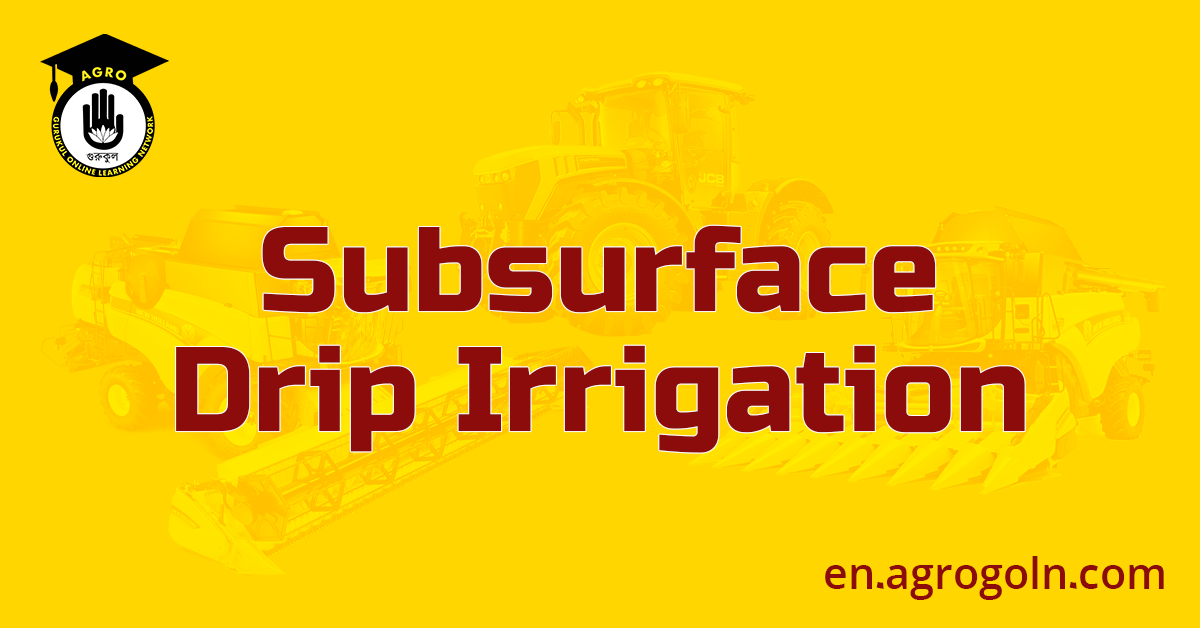Water scarcity and the increasing demand for food production pose significant challenges to modern agriculture. In response, innovative irrigation techniques have emerged to maximize water efficiency and enhance crop productivity. Subsurface Drip Irrigation (SDI) is one such revolutionary approach that is transforming the way farmers irrigate their crops. This article explores the principles, benefits, implementation, and future prospects of Subsurface Drip Irrigation.
1. Understanding Subsurface Drip Irrigation (SDI)
Subsurface Drip Irrigation (SDI) is a water-efficient and precision irrigation method in which water is delivered directly to the plant’s root zone through a network of buried polyethylene tubing with emitters. Unlike traditional surface irrigation methods, such as flood or sprinkler irrigation, SDI minimizes water losses due to evaporation, runoff, and drift, delivering water precisely to the root zone where plants can effectively absorb it.
2. The Science Behind SDI
SDI relies on the principles of capillary action and soil moisture distribution. The buried drip lines release water at a low pressure, and as the soil moisture content decreases, water moves through capillary action from the wet area around the emitter to the drier parts of the root zone. This controlled movement of water ensures that plants receive a consistent and steady supply, promoting healthier root growth and optimal nutrient uptake.
3. Advantages of Subsurface Drip Irrigation
a. Water Efficiency: SDI is one of the most water-efficient irrigation methods available. It minimizes water wastage through evaporation and runoff, often reducing water use by up to 50% compared to traditional surface irrigation methods.
b. Improved Crop Yield and Quality: By delivering water directly to the root zone, SDI ensures that plants receive a consistent supply of moisture and nutrients. This promotes healthier plant growth, higher yields, and improved crop quality.
c. Reduced Weed Growth: Unlike surface irrigation methods, SDI targets water directly to the crop’s root zone, reducing water availability for weeds. As a result, weed growth is significantly minimized, reducing the need for herbicides.
d. Soil Conservation: SDI helps in maintaining soil structure and fertility by reducing soil erosion caused by excessive water application.
e. Labor and Energy Savings: The automated nature of SDI reduces labor and energy requirements for irrigation, freeing up farmers’ time and reducing operational costs.
4. Implementation of SDI
a. Site Selection and Design: Successful implementation of SDI requires careful site selection and system design. Factors such as soil type, crop type, climate, and water quality need to be considered to determine the appropriate spacing of drip lines and emitter flow rates.
b. Drip Line Installation: The drip lines are buried below the soil surface to prevent damage and minimize exposure to environmental factors. They are typically installed in a grid pattern, aligned with the crop rows.
c. Filtration and Maintenance: Proper filtration is essential to prevent clogging of emitters. Regular maintenance, including monitoring water flow rates, checking for leaks, and cleaning filters, is crucial for the efficient operation of the SDI system.
d. Automation and Monitoring: Many modern SDI systems are equipped with automated controllers and sensors that monitor soil moisture, weather conditions, and water flow. These features allow farmers to adjust irrigation schedules and optimize water usage based on real-time data.
5. Challenges and Solutions
a. Upfront Investment: The initial cost of installing an SDI system can be higher compared to traditional irrigation methods. However, the long-term water savings and increased crop yields often provide a return on investment over time.
b. Clogging and Maintenance: Clogging of emitters can be a common issue in SDI systems, especially in areas with poor water quality. Regular maintenance, including proper filtration and flushing, can help prevent clogging and ensure efficient operation.
c. Soil Salinization: In areas with high water salinity, SDI can lead to the accumulation of salts in the root zone. Proper irrigation management and leaching practices are necessary to prevent soil salinization.
6. Future Prospects
As global water scarcity intensifies and the need for sustainable agriculture grows, the future of Subsurface Drip Irrigation looks promising. Advancements in irrigation technology, sensor-based automation, and precision agriculture are likely to enhance the efficiency and effectiveness of SDI systems further.
Moreover, SDI has the potential to address the challenges posed by climate change, such as erratic rainfall patterns and prolonged droughts. By delivering water directly to the root zone, SDI can offer a buffer against water stress and enhance crop resilience.
Additionally, the adoption of SDI can contribute to sustainable water management and environmental conservation. By reducing water use and minimizing nutrient leaching, SDI helps protect water resources and reduces the pollution of groundwater and surface water bodies.
Conclusion
Subsurface Drip Irrigation (SDI) is a game-changer in the realm of agricultural water management. Its ability to deliver water efficiently and precisely to the root zone of crops translates into higher yields, reduced water wastage, and improved environmental sustainability. As global populations grow and water resources become scarcer, the adoption of SDI can play a pivotal role in ensuring food security, promoting sustainable agriculture, and preserving our precious water resources for generations to come.
